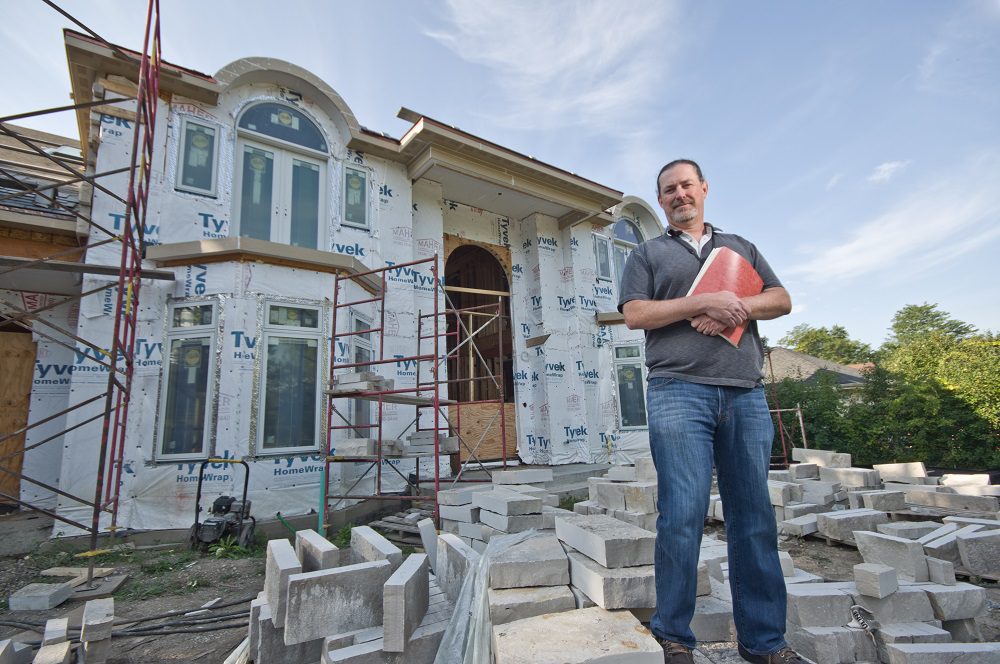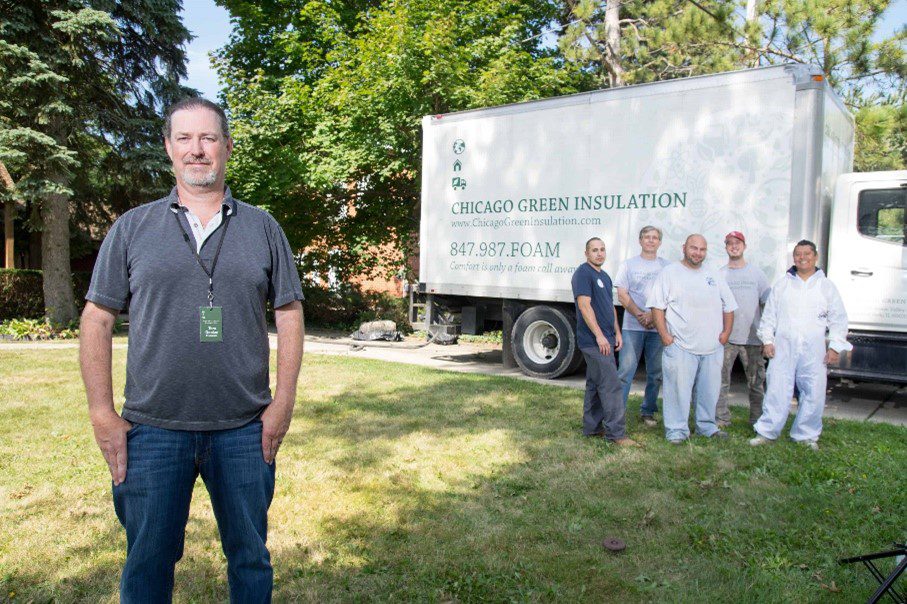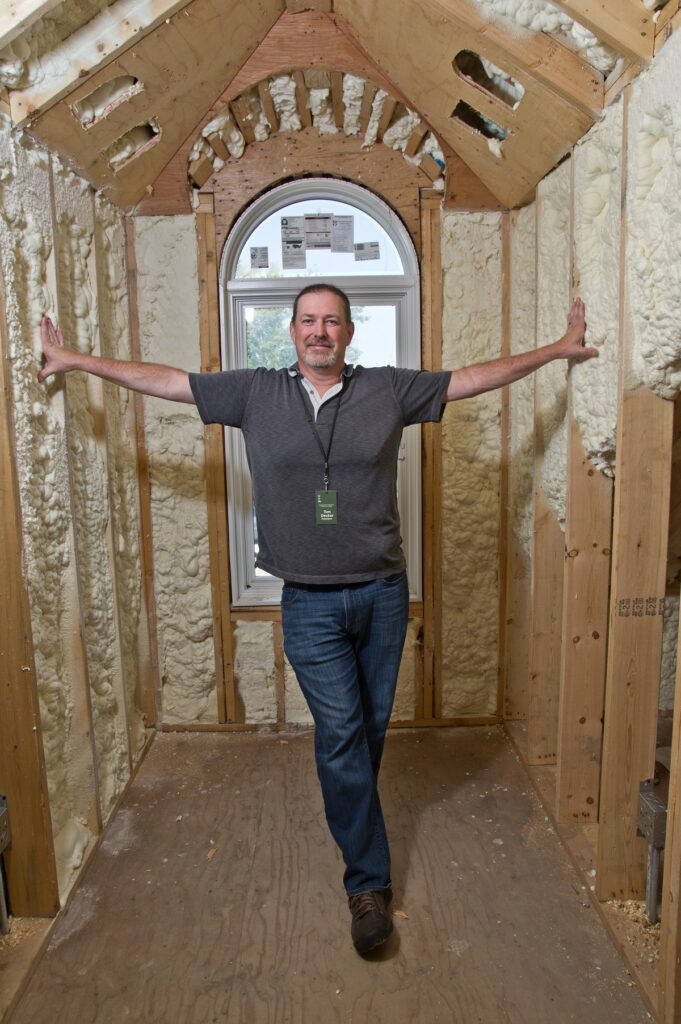Crank up the air conditioning. Or the furnace.
Open the windows. Or close them.
Grab a fan. Or a blanket.
These are just a few ways we try to keep the temperature comfortable at home, at the office, at school or in other buildings, either when the heat and humidity build in the summer, or when cold blows in during the winter.
One critical factor in maintaining comfortable indoor temperatures gets minimal attention. The insulation hidden inside the walls keeps heat outside in the summer and inside in the winter. And U.S. Soy contributes to an energy-efficient, environmentally friendly option: spray foam insulation.
“It’s better for our resources to come from above the ground than from below the ground,” says Tom Decker, owner of Chicago Green Insulation, a spray foam insulation company launched in 2013 servicing customers in and around Chicago, the third-largest city in the U.S.
Decker offers the soy-biobased Heatlok® closed-cell insulation made by Huntsman Building Solutions, a spray foam insulation that incorporates renewable soybean oil to reduce petroleum content. He believes the environmental, economic and social benefits combine for superior insulation.
Benefiting Budgets
He notes that spray foam with soy offers long-term cost benefits. Decker says customers can experience savings of up to 60% on heating and cooling costs.
“While the initial installation costs may be higher, it is actually less expensive over time due to the energy savings,” he explains.
When properly installed, closed-cell spray foam insulation provides stronger air and moisture barriers than other types of insulation, because it bonds tightly to surfaces. It seals cracks and gaps, and it reduces dust and pollen. As a result, it cuts energy use and improves comfort.
One of his customers noted that after installing spray foam insulation with soy in their 1950s-era home following fire damage, it was dramatically more comfortable — far less drafty and cozier in general.
Decker helps his Chicagoland customers take advantage of any available incentives for using energy-saving products. In the U.S., that includes tax credits, insurance claims and more.
“I call it ‘top-shelf’ spray foam — a class above the others,” he says. “This product is not just for high-end neighborhoods. In fact, I get really passionate about installing this in middle and lower-income areas, because they’re the ones who benefit most from lower heating bills.”
Conforming to Code
Decker says demand is high for the product. The state of Illinois adopted the 2021 International Energy Conservation Code, which has much higher standards for resistance to heat flow and air leakage.
“Spray foam insulation is pretty much the only way to meet these higher standards,” he says.
With these codes, he believes the rest of the construction industry in his region has to catch up to Chicago Green Insulation. Although the soy product is just one option, it makes up most of that portion of his business.
Decker says he gets calls every week where the first question is, “Do you use spray foam containing soy?” He proudly answers that he does.
“More discerning buyers want every value-add that they can make to the universe with their choices,” he says.
Illinois is one of the largest states in U.S. soybean production, so his use of spray foam insulation containing soybean oil supports other family-owned businesses in his regions.
Building Sustainably with U.S. Soy
The spray foam insulation with soy installed by Chicago Green Insulation is just one example of the way U.S. Soy supports sustainability in the construction and renovation industry. Ingredients from U.S. Soy can also be found throughout buildings, from roof coatings and sealants to plywood and paneling, and from paint and stains to carpet backing.
Soybean oil, soy flour and other components of soybeans can replace less desirable elements in these products, like petroleum-based chemicals and formaldehyde, with renewable resources. That’s part of the reason spray insulation with soy fits naturally into Decker’s business.
“I think of Chicago Green Insulation as a social enterprise,” he says. “Like solar and wind, soy foam insulation is coming into acceptance. We are moving into a potentially golden era of making business interests further the values we have for our community and our world. We’re part of changing the way things get done.”
And in the process, Decker sustainably contributes to less fiddling with thermostats, windows, fans and blankets in the quest for personal comfort indoors.


